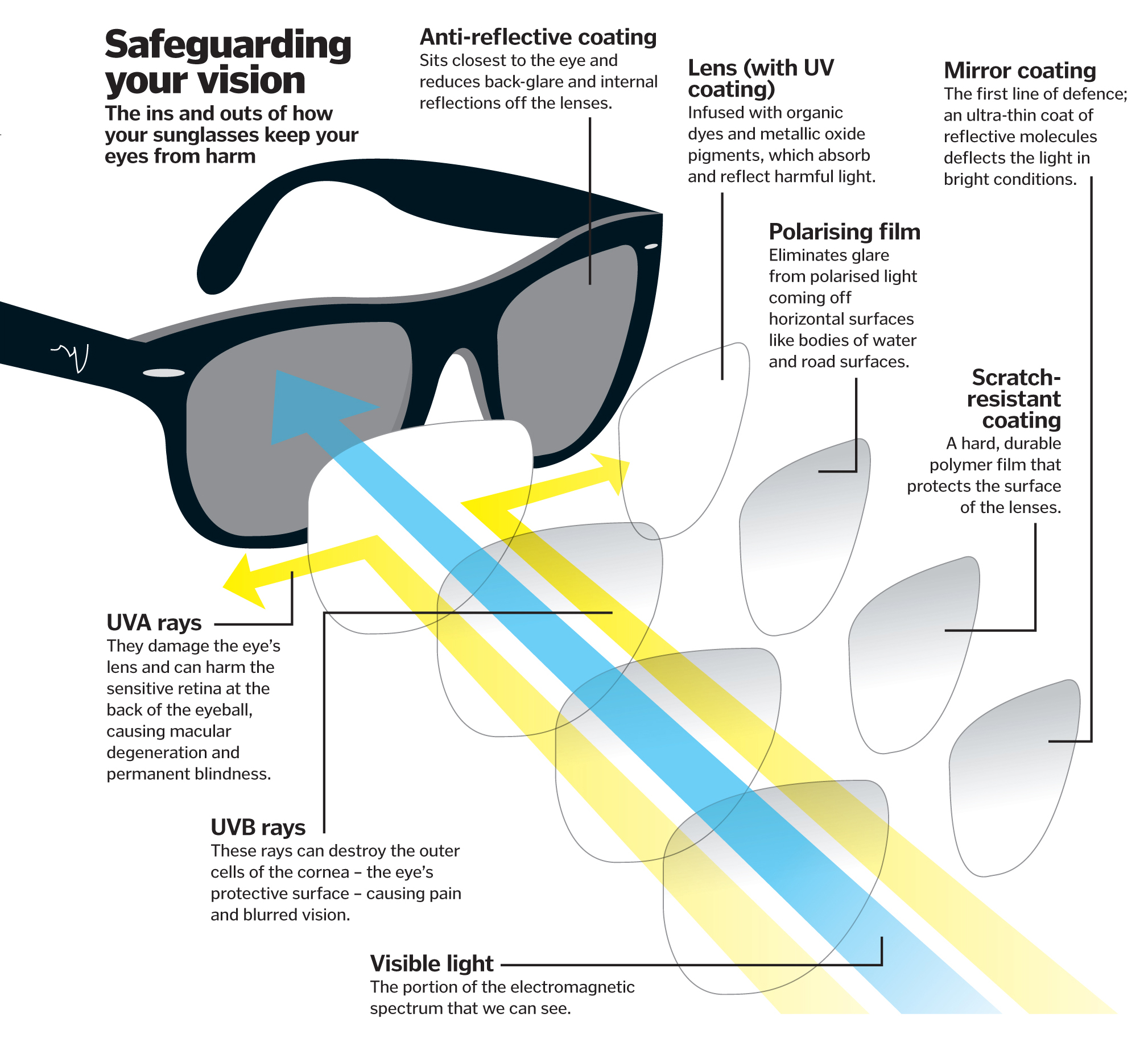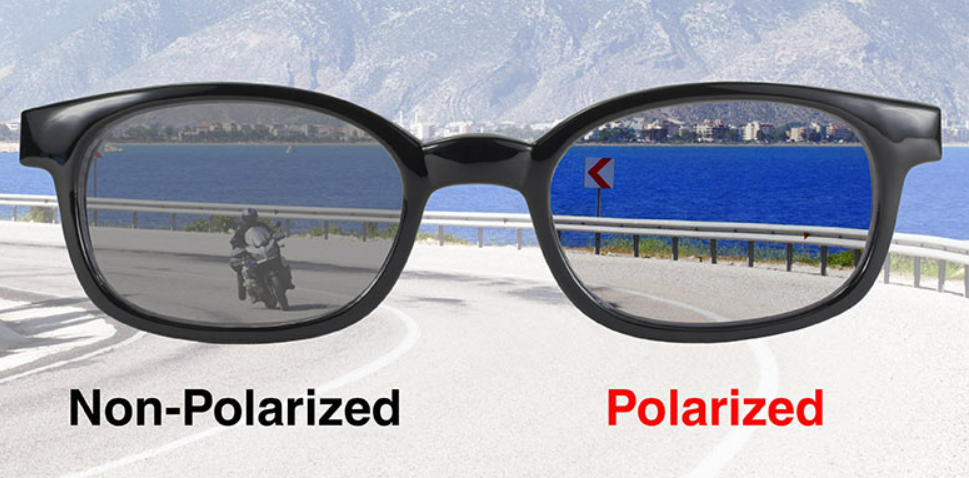Have you ever squinted at the road on a bright sunny day, struggling to see clearly through the glare reflecting off the asphalt? Or perhaps you’ve found yourself battling the dazzling reflection of water, snow, or even a glass building? These frustrating experiences highlight the importance of understanding how polarized sunglasses work and the significant benefits they offer. In a world increasingly dominated by bright screens and intense sunlight, the ability to see clearly and comfortably is paramount for both our safety and well-being. This comprehensive guide delves deep into the science and practical applications of polarized sunglasses, exploring their mechanisms, advantages, and limitations to help you make informed decisions about protecting your eyes. We’ll unpack the complexities of light polarization, explore the various types of polarized lenses available, and discuss how these specialized glasses enhance visual clarity and reduce eye strain in a variety of situations. From driving and boating to outdoor sports and everyday use, we’ll uncover why polarized sunglasses are more than just a fashion accessory; they’re a valuable tool for protecting your vision and improving your overall experience in bright conditions.
Understanding Light Polarization
What is Light Polarization?
Sunlight, as we perceive it, is unpolarized. This means the light waves vibrate in all directions. However, when sunlight interacts with certain surfaces, like water, snow, or even a smooth road, it becomes polarized. This means the light waves are now primarily vibrating in a single plane. This polarized light is what creates that harsh glare that makes it difficult to see clearly.

How Polarized Lenses Work
Polarized sunglasses employ a special filter, typically made of a material called polyvinyl alcohol (PVA), that is aligned in a specific direction. This filter only allows light waves vibrating in one particular plane to pass through, effectively blocking the horizontally polarized glare. This filtering process significantly reduces the intensity of reflected light, resulting in a clearer, more comfortable view.
The Science Behind the Polarization
The PVA filter in polarized lenses is treated with a special iodine solution that aligns the long-chain molecules within the material. These aligned molecules act like a sieve, allowing only vertically-oriented light waves to pass through while blocking the horizontally-oriented glare. This process is extremely effective in reducing the intensity of reflected light, making polarized lenses ideal for various outdoor activities.
Examples of Polarized Light
- Reflective surfaces like water, snow, and glass.
- Smooth, hard surfaces such as roads and polished furniture.
- Even the sky on a clear day can contribute to polarized light.
Types of Polarized Lenses
Different Materials and Technologies
While PVA is the most common material used in polarized lenses, other materials are also employed, each with its own advantages and disadvantages. Some high-end lenses incorporate advanced technologies to enhance clarity, scratch resistance, and impact resistance. These technologies often come with a higher price tag but offer superior performance and durability.
Comparing Lens Materials: Glass vs. Plastic
| Feature | Glass Lenses | Plastic Lenses |
|---|---|---|
| Scratch Resistance | Lower | Higher |
| Impact Resistance | Lower | Higher |
| Weight | Heavier | Lighter |
| Cost | Higher | Lower |
Choosing the Right Lens for Your Needs
The best type of polarized lens for you will depend on your individual needs and preferences. Consider factors such as your budget, the activities you’ll be using the sunglasses for, and the level of protection you require. For example, glass lenses may be preferred by drivers who prioritize clarity, while plastic lenses are a better choice for outdoor sports enthusiasts who need impact resistance.
Benefits of Wearing Polarized Sunglasses
Enhanced Visual Clarity
The most significant benefit of polarized sunglasses is the dramatic improvement in visual clarity. By eliminating glare, these glasses make it easier to see details and objects in bright conditions. This is especially beneficial in situations where glare can significantly impair vision, such as driving on a sunny day or boating on a bright, reflective body of water.
Reduced Eye Strain and Fatigue
Constantly squinting in bright sunlight can lead to significant eye strain and fatigue. Polarized sunglasses reduce the need to squint, thus lessening the strain on your eye muscles and improving overall visual comfort. This is particularly important for people who spend long hours outdoors or in bright environments.
Improved Safety
In many situations, enhanced visual clarity can significantly improve safety. For drivers, polarized sunglasses can reduce glare from oncoming headlights and improve visibility on wet roads. For boaters, they can enhance the ability to spot obstacles on the water. And for outdoor sports enthusiasts, they can improve visibility and reduce the risk of accidents.
Real-world examples:
- Driving safety: Studies have shown that polarized sunglasses can reduce the risk of accidents by improving visibility and reducing glare.
- Boating safety: Polarized sunglasses help boaters see through the glare on the water, improving their ability to spot hazards.
- Sports performance: In sports like fishing, skiing, and cycling, polarized sunglasses can enhance performance by improving visual acuity.
Practical Applications and Considerations
Driving
Polarized sunglasses are highly beneficial for drivers, reducing glare from the road, improving visibility in bright sunlight, and enhancing overall driving safety. However, it’s crucial to ensure the sunglasses don’t interfere with the visibility of digital displays in the vehicle.
Boating and Water Sports
The reflective nature of water makes polarized sunglasses indispensable for boating and water sports. They significantly reduce glare, allowing boaters to see through the surface of the water and spot potential hazards more easily.
Outdoor Sports
From skiing and snowboarding to hiking and cycling, polarized sunglasses protect your eyes from harmful UV rays and improve visual clarity, enhancing performance and safety in various outdoor activities.
Everyday Use
Even for everyday use, polarized sunglasses offer significant benefits. They reduce eye strain and improve comfort in bright conditions, making them a valuable accessory for anyone who spends time outdoors.
Potential Challenges
- LCD screens: Polarized sunglasses can sometimes interfere with the visibility of LCD screens, such as those found in some vehicles and electronic devices.
- Cost: High-quality polarized sunglasses can be more expensive than non-polarized options.
- Finding the right fit: It’s essential to find a pair of sunglasses that fit comfortably and provide adequate coverage.
Summary and Recap
Polarized sunglasses utilize a special filter to block horizontally polarized light, dramatically reducing glare and improving visual clarity. This technology offers numerous benefits, including enhanced visual acuity, reduced eye strain, and improved safety in various situations. The reduction of glare is particularly impactful in environments with reflective surfaces like water, snow, and roads. Different lens materials, such as glass and plastic, offer varying degrees of scratch and impact resistance, allowing users to choose the best option based on their needs and budget. While some challenges exist, such as potential interference with LCD screens, the advantages of polarized sunglasses significantly outweigh the drawbacks for many individuals, especially those who spend significant time outdoors or engage in activities where clear vision is paramount.
Key takeaways include the understanding of light polarization, the mechanism by which polarized lenses work, the different types of lenses available, and the various benefits ranging from improved safety to reduced eye strain. The practical applications extend across numerous scenarios, from driving and boating to participating in outdoor sports and simply enjoying everyday life under bright conditions. Careful consideration of lens material, fit, and potential compatibility issues with certain devices ensures optimal performance and user experience.
Frequently Asked Questions (FAQs)
How do polarized sunglasses differ from regular sunglasses?
Regular sunglasses primarily reduce the overall intensity of light, while polarized sunglasses specifically target and eliminate glare caused by horizontally polarized light. This makes polarized sunglasses significantly better at reducing glare and improving visual clarity in bright, reflective conditions.
Are polarized sunglasses worth the extra cost?
For many individuals, the enhanced visual clarity, reduced eye strain, and improved safety offered by polarized sunglasses are well worth the extra cost. The benefits are especially pronounced for those who spend significant time outdoors or engage in activities where clear vision is crucial.
Can I wear polarized sunglasses while driving?
Yes, polarized sunglasses are often beneficial for driving, reducing glare from the road and improving visibility. However, some newer vehicles utilize LCD screens that may be affected by the polarization, so it’s important to test them before relying on them for driving.
Do polarized sunglasses protect my eyes from UV rays?
Many polarized sunglasses offer UV protection, but it’s essential to check the label to ensure they provide adequate UV protection. UV protection is independent of the polarization feature.
How do I clean my polarized sunglasses?
Clean your polarized sunglasses gently with a microfiber cloth and lukewarm water. Avoid harsh chemicals or abrasive cleaners that could damage the lenses. Always store them in a protective case to prevent scratches.



